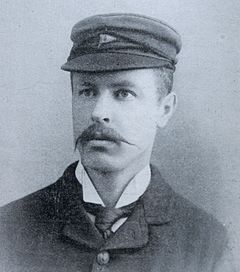 Linton Hope (18 April 1863 – 20 December 1920) was best known at the RCC as a formidable canoe sailor and for the development of his sailing canoe designs (particularly the B Class) but also the design of a racing C2 – one of which the Club still owns.
Linton Hope (18 April 1863 – 20 December 1920) was best known at the RCC as a formidable canoe sailor and for the development of his sailing canoe designs (particularly the B Class) but also the design of a racing C2 – one of which the Club still owns.
Linton however designed very successful Thames A Raters – with towering sail plans and skimming hulls (some of which still exist today at Thames Sailing Club) – and a variety of yachts, as well as the Fairy One Design for the North of Ireland Yacht Club.
He designed yawls and mid-sized yachts for a range of clients being appointed as the yacht designer to the King of the Belgians however his expertise spread far afield when his Half Rater designs were sent to India, specifically the Malabar, Nainital and Rangoon Yacht Clubs at a time when the Canoe Club had a reach across the British Empire and off shoots of the Club in a number of distant countries.
Linton Hope won two Olympic races during the 1900 summer Olympic sailing event in Meulan, in France using the yacht Scotia which he designed.
Linton raced with Lorne Currie as helmsman and with fellow crew members John Gretton (later a Conservative MP) and Algernon Maudslay (CBE), They took first places in both the race of the .5 to 1 ton class and the Open class.
All boat classes that competed in the Meulan race programme competed again in the Concours d’Honneur (Open class). It was held on 20 May 1900. About seventy–eight sailors on forty–seven boats, from six nations competing. The latest finishing time was at 19:00 hours. Only seven boats made it to the finish in time.
In 1915 Hope designed the AD Flying Boat for the British Admiralty’s Air Department and his hull designs were used by a number of British flying boats in the 1920s including the Phoenix P.5 Cork and Fairey Titania, largest flying boat in the world at the time. It surprising the extent to which the early hulls copied the shape the experience of the sailing and paddling canoes designed for the club. (In the archive we have a photograph of Linton in his navy uniform – albeit somewhat damaged over time).
Linton Hope died at the early age of 57 in Midhurst, Sussex – he was so well admired by the RCC members of the time that they paid for his funeral expenses. This December will be the 100 year anniversary of the death of this remarkable man!
